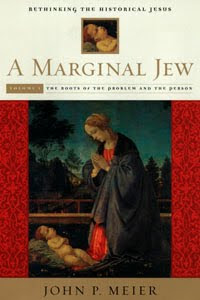In what version of reality can death by lightning-strike be judged so-so, pretty ordinary, 14 out of 84?! I recently came across a listing of Roman emperors' deaths, compiled by
failed PhD candidate Josh Fruhlinger,* organized "
in order of how hardcore they were".
(* I should point out that Josh Fruhlinger's self-confessed credentials for drawing up this list rest on the fact that he "quit five semesters into an ancient history Ph.D. program", which is why I used the rather brutal shorthand "failed PhD candidate".)
 |
| La Mort de Tibère ("Death of Tiberius") by Jean-Paul Laurens |
Methodology
Josh has gathered death data for 84 emperors (
Wikipedia lists more than 85) and has arranged them according to how exciting a death they suffered. (At least, I
presume that's Josh's intention.
Merriem-Webster defines "hardcore" either as "a persistent wretched condition", or as "militant or fiercely loyal", or as "containing explicit descriptions of sex acts or scenes of actual sex acts", none of which helps to explain Josh's methodology.) His main criterion seems to be sensationalism. What was the most sensational emperor's death ever? Obviously, if any emperor had ever been humiliatingly captured in battle rather than fighting to the end, and had then compounded the humiliation by being flayed alive and stuffed like a manequin,
that would be the winner. Step forward,
Valerian. Certainly an entertaining cause of death. But
hardcore enough for 1st place?
The also-rans
By contrast, your very own blogging emperor is listed as 65th equal (with nineteen others!) because death was by "natural causes". Fair enough. Not very sensational. (And not very persistently wretched, fiercely loyal, or sexually explicit, depending on the correct definition of "hardcore" here.) But there are natural causes ... and there are "natural causes".
Titus, for example, died aged 41 after reigning a little over two years. With a younger brother desperate to try his hand at emperorship, isn't this a little suspicious? (And worth a "hardcore" rating better than joint-65th?)
Vespasian only gets away with 64th place, because he gave a quotable death-bed quip, here rendered "Uh oh, I think I'm becoming a God". (Alternatively, he is supposed to have said that "an emperor ought to die standing up", before dying ... on his back.) But it's not clear why
Diocletian's natural death snagged him position 63; maybe because he'd been tending to his vegetable garden beforehand? (Not very hardcore, in my opinion.) And
Romulus Augustulus, "Last Emperor of the West", sneaks in at 62, for no clear reason; likewise
Glycerius at number 61, a man whom I'd never heard of, and upon whose death Wikipedia is unable to shed any light. At least
Augustus, the first ever Roman emperor, and
Claudius claw their way up to joint 59th place, on the strength of their
maybe having been poisoned ... at least in
Robert Graves' opinion.
 |
| "The Death of Nero" by Konstantin Makovsky |
Killed, not died?
Josh numbers the rest from 1 to 58, presumably by virtue of how
hardcore their murder or killing was. Poor
Lucius Verus is deemed the least hardcore, at number 58, for a death by food poisoning. But Verus was thought to have died of the plague. How cool is that? Worth better than number 58, I'd say. Next up is
Jovian, whose excessive appetite was probably involved in his death at the age of 32, rather than Josh's explanation that he "suffocated in his rooms by carbon monoxide fumes from a charcoal grill" (though that's certainly more colorful than choking on mushrooms).
Theodosius II gets his 56th position by virtue of having "fallen off a horse". I suppose that's mildly more interesting than over-eating or being very old. But it surely beats the routine stabbings that we shall soon arrive at. Position number 55 is secured by
Claudius II for dying of
plague. (Hard luck, Lucius Verus, whose
plague obviously wasn't "hardcore" enough.) The death of
Valentinian II at the age of 21 is certainly interesting, as he was allegedly found dangling at the end of a rope. Pretty sensational, for a Roman emperor. So why is Valentinian's hanging (no. 54) trumped by the pillow-smothering of
Tiberius (no. 53)? Granted, the farcical attempted suicide of
Nero, who was finally stabbed -- at his request -- by his private secretary, makes a better story and is probably worth position 52.
Murdered, not died!
With
Domitian at number 51, we begin the tedious series of Roman emperors who were assassinated, usually by stabbing. Five (including
Caligula) are judged to be joint 46th -- more "hardcore" than Domitian, but
not quite as "hardcore" as
Severus Alexander (no. 45). But why? Others presumably gain a higher score based on the exotic
scene of their murder: especially
Constans (44th), who sought sanctuary in a temple -- in vain --, and
Caracalla (no. 42), who was famously stabbed while urinating (unattended, for privacy's sake) by the side of the road. I can see why
Numerian (no. 41) might leap-frog these (although he was only "
possibly assassinated"), because his corpse was only discovered when his guardsmen noticed the rancid smell emanating from his closed carriage. But why does
Carinus merit 43rd, when the circumstances of his death are not even known; or
Aurelian 40th, when he suffered an assassination very similar to Caligula's? And how on earth did
Geta manage to place 10th for a similarly routine stabbing (allegedly in his mother's arms -- how's
that for an exotic setting)?
Slain, not died!
Josh has obviously invested civil war with enhanced
hardcore-ness. First, four emperors share 36th equal for dying in battle during civil war. These are presumably "heroic" deaths, ranking above the stabbings and over-eatings (and falling off a horse). Fair enough. Another four emperors share 32nd equal for having been executed after losing a civil war (although surely
Gratian should be downgraded to the "assassinated" category). Another two are tied at 30 (for having been forced to become bishops after losing a civil war, and having been subsequently murdered, a well-deserved score for the sheer bizarreness of their circumstances -- although I'm not sure that this is an accurate account of
Julius Nepos's end). Four share 26th equal for having committed suicide after losing a civil war; and seven share 19th equal for having been murdered by their troops during a civil war. This sequence may make some kind of sense, but why, then, is the shadowy
Quintillus elevated to number 18, when he would fit better with the 26th equal crowd?
The next three (Gordian III, Decius, Julian) are simple battle deaths, no doubt scoring higher than the 36th-equals because it was not a selfish death during civil war, but a glorious death against Rome's enemies! How, then, does
Valens manage 7th place for a battle-death like these others (although his corpse was never identified to confirm this)?
 |
| Anonymous, "Death of Commodus" |
Spectacular deaths
And then we arrive at the ill-starred
Carus, "possibly struck by lightning"! He is --quite justifiably, I think -- denied 13th spot by
Valentinian I -- my long-time favorite death -- who died of an apoplectic rage while negotiating with German ambassadors. But both have surely been cheated by
Valentinian III, a simple assassination by poison. However, it seems that poisoning scores high on Josh's hardcore-ness meter. Eastern emperor
Leo II -- elbowed into position 11 by Geta -- is registered as "poisoned" (although he may have died of disease).
Much more spectacularly than either of these,
Commodus (no, he
wasn't stabbed by
Russell Crowe) is ranked 9th for a failed poisoning, followed by strangulation at the hands of a professional wrestler. I don't know about "hardcore", but that's quite a colorful death. Strangulation is popular, too: it snags 8th place in Josh's list for
Vitellius (although he may actually have been beheaded). Presumably the beheading of
Majorian ranks higher -- he is placed at no. 5 -- because it was preceded by several days of torture; but how did
Anthemius snag 4th place for a similar beheading? Surely the death of short-lived emperor
Petronius Maximus, who was unexpectedly stoned to death by an angry mob, deserves higher than 6th place?
But beheading seems to be Josh's definition of "hardcore".
Galba's bronze-medal-winning 3rd place seems to rest on the fact that his head, separated from his shoulders, was carried aloft to invite mockery ... just like 8th-placed Vitellius, in fact. However, the death of the usurper
Joannes -- wait a minute: this list is supposed to
exclude usurpers! -- has the added value of his beheading having been preceded by having his hand cut off and being paraded on a donkey (allegedly).
Correct order?Looking down Josh's list, the order seems a little skewed. Perhaps some ground-rules should have been drawn up. Who says that falling off a horse is less "hardcore" than dying of plague? And you can't go by "method of death", then decide that treatment of the corpse counts, as well ... that being "taxidermied" trumps having your corpse tossed down the Gemonian Steps at Rome. Or having been struck by lightning!
 This month, the History Channel's web site carried an article entitled "7 Things You May Not Know About Caligula".
This month, the History Channel's web site carried an article entitled "7 Things You May Not Know About Caligula".
















